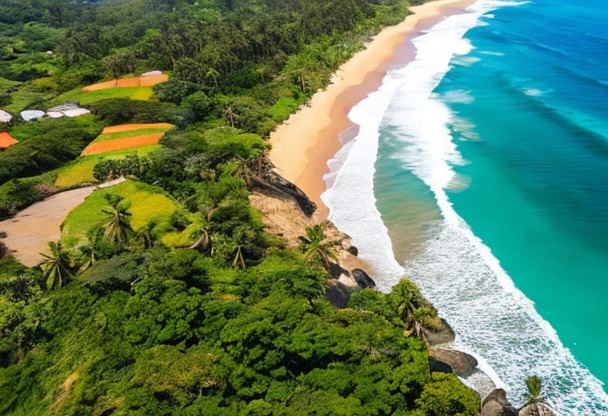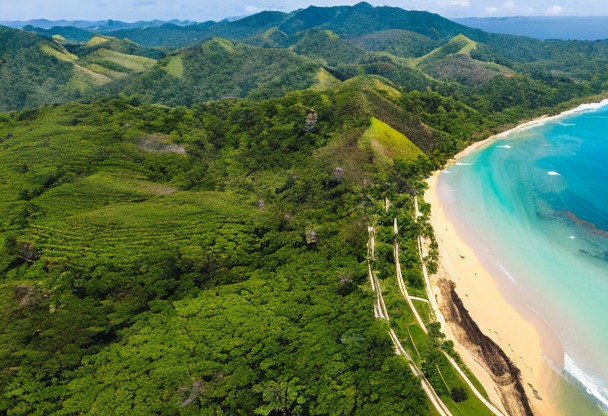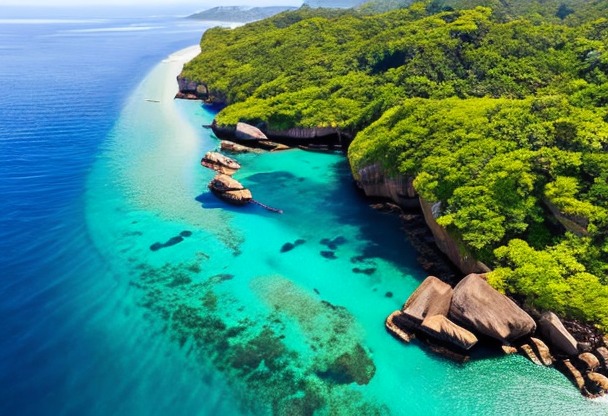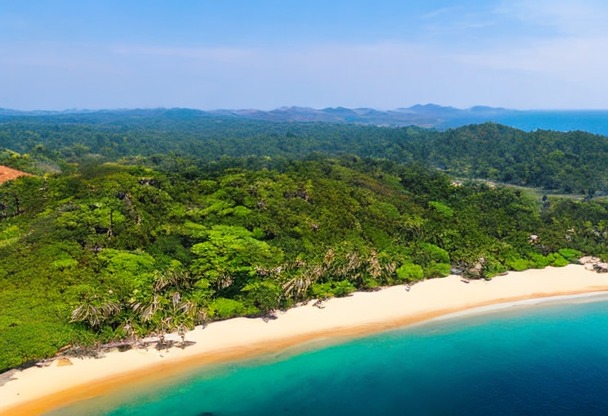WHEN TO TRAVEL TO Sri Lanka
Choosing the right time for your trip to Sri Lanka can make all the difference. It's important to consider climatic elements, seasonal events and busy tourist periods to maximize your travel experience.

Location
Climate
Understanding the seasons in Sri Lanka
Sri Lanka's climate is tropical and humid, characterized by two monsoons that strongly influence the island's weather. Understanding these phenomena is essential to choosing the right time to travel.Southwest monsoon (Yala)
From May to September, the southwest monsoon brings heavy rains to the west coast, central and southern parts of the country. This period corresponds to the low tourist season in these regions, as the showers can be violent and make certain activities less enjoyable. However, if you're not put off by the rain and want to take advantage of lower rates, this is an option worth considering.Northeast monsoon (Maha)
From November to February, the northeast monsoon takes over, bringing rainfall to the north and east of the island. During this period, the regions affected by the south-west monsoon generally enjoy a drier, sunnier climate, making this the peak tourist season for these areas.Best times to visit Sri Lanka
It all depends on your priorities and the regions you wish to discover during your stay. Here are a few suggestions for making the most of the country:- December to March : is the best time to visit the west, central and south coasts of the country, as the weather is generally dry and sunny. The beaches are ideal for swimming and water sports, while the cultural heritage can be discovered under blue skies.
- April and September: These months correspond to periods of transition between the two monsoons. They can be a good compromise if you want to discover the whole island, as weather conditions are often milder than during the monsoon season. However, it's difficult to predict the weather with any certainty, and there may be occasional showers.
- May to October : is the ideal time to explore the north and east of Sri Lanka, which enjoy a drier, sunnier climate during the south-west monsoon. The beaches in this region are magnificent and less crowded than those in the south or west.
Major cultural events in Sri Lanka
Sri Lanka is a country rich in traditions and festivities, some of which are well worth a visit if you're there at the right time. Here are a few not-to-be-missed events:Vesak Poya (April/May)
This Buddhist festival celebrates the birth, enlightenment and death of Buddha. All over the country, temples are illuminated and decorated for the occasion, while processions and religious ceremonies are organized. It's an ideal time to discover local culture and witness exceptional events.Esala Perahera (July/August)
Considered one of the world's greatest Buddhist festivals, the Esala Perahera takes place every year in Kandy. For 10 days, spectacular nocturnal processions roam the streets of the city, with traditional dancers, musicians, acrobats and majestically adorned elephants. An unforgettable experience not to be missed!Deepavali (October / November)
Also known as Diwali, this Hindu festival celebrates the victory of light over darkness and good over evil. Houses are decorated with oil lamps and string lights, and fireworks are set off to ward off evil spirits. It's a festive occasion to discover Sri Lanka's Hindu traditions.Public holidays in Sri Lanka
Sri Lanka has a large number of public holidays linked to the different religions practiced in the country (Buddhism, Hinduism, Islam and Christianity). Here are some of the main public holidays to be aware of if you are planning your stay:- Sinhalese and Tamil New Year (April)
- Labour Day (May 1)
- Ramadan (date varies according to lunar calendar)
- National holiday (February 4)
- Christmas (December 25)
Insurance

Your credit card does not cover you in all situations, that is whyIt is essential to take out insurance before you leave to avoid any unpleasant surprises. If you need to see a doctor or be hospitalized, in some countries, medical costs are very high and you will then find yourself having to pay several thousand euros.
Our partner Chapka Insurance proposes the contract CAP ASSISTANCE 24/24 with many essential guarantees.


Flights

Your flight has been cancelled or delayed ?
You may be eligible for a compensation of up to €600 ! For this, lawyers are responsible for handling your claim with the airline and are only paid when the reimbursement is effective.
In conclusion, no financial risk for you, only advantages!
Immigration statistics in Sri Lanka
As in many developing countries, immigration is a major phenomenon in Sri Lanka. Foreigners mainly come from neighboring countries, notably the Indian subcontinent, to find work or escape difficult political situations. However, it is essential to take several factors into account when discussing immigration statistics in this country:- Changes in migratory flows Available data show that immigration flows to Sri Lanka have varied over recent decades, depending on the country's economic and political situation.
- The number of expatriates : According to official figures, over 2 million Sri Lankans live abroad, mainly in the Gulf States and Europe.
- The presence of refugees : As a result of the civil war that has plagued Sri Lanka for almost 30 years, many thousands of people have been forced to leave their homeland to seek refuge elsewhere. The situation has improved since the end of the conflict in 2009, but some refugees are still arriving.
Most popular visas in Sri Lanka
Entering Sri Lanka as a foreigner generally requires a visa. The type of visa required depends on the purpose of your stay and the length of time you intend to stay. Here are the most commonly requested visa categories:Tourist visa
Unsurprisingly, the tourist visa is one of the most popular ways to visit Sri Lanka. It allows foreign travelers to explore this magnificent country for up to 30 days. Nationals of some countries can even obtain a visa on arrival at the airport, while others must apply online via the ETA (Electronic Travel Authorization) system before departure.Business visa
More and more entrepreneurs and investors are attracted by Sri Lanka's economic potential. To meet this growing demand, the government has introduced a special business visa. This type of visa is generally valid for a maximum of 90 days, and can be extended on the spot if necessary.Student visa
Sri Lanka also welcomes a growing number of foreign students, mainly from Asian countries. Universities and institutes of higher education offer courses in various fields, including education, medicine and engineering. For international students wishing to study in Sri Lanka, it is essential to obtain a student visa prior to arrival.International tourism figures for Sri Lanka
In recent years, the international tourism The tourism industry in Sri Lanka has grown by leaps and bounds. The government has relied on this sector to stimulate the national economy, notably by improving tourism infrastructure and facilitating access to visas for foreign visitors. International tourism figures are a clear indication of this trend:- The number of arrivals : According to official data, over 2 million tourists visited Sri Lanka in 2019, a significant increase on previous years.
- Visitor nationalities Neighbouring countries such asIndia and the China account for a significant proportion of tourists to Sri Lanka, but there has also been an increase in the number of travellers from Europe, the Middle East and Asia.Australia and UNITED STATES.
- Tourist spending International tourism generates significant revenues for Sri Lanka, estimated at over $4 billion in 2019.
Challenges facing Sri Lanka's tourism sector
Despite these encouraging figures, the Sri Lanka also faces a number of challenges in maintaining growth in its tourism sector:- Regional competition The country needs to stand out from other popular destinations such as India, Thailand and the Maldives.
- Sustainable development With the number of visitors on the rise, it's essential to preserve the country's natural and cultural resources to ensure responsible, environmentally-friendly tourism.
- Tourism infrastructure management The country must continue to invest in improving its infrastructure (transport, accommodation, tourist sites) to meet the expectations of international travelers and ensure their satisfaction.


